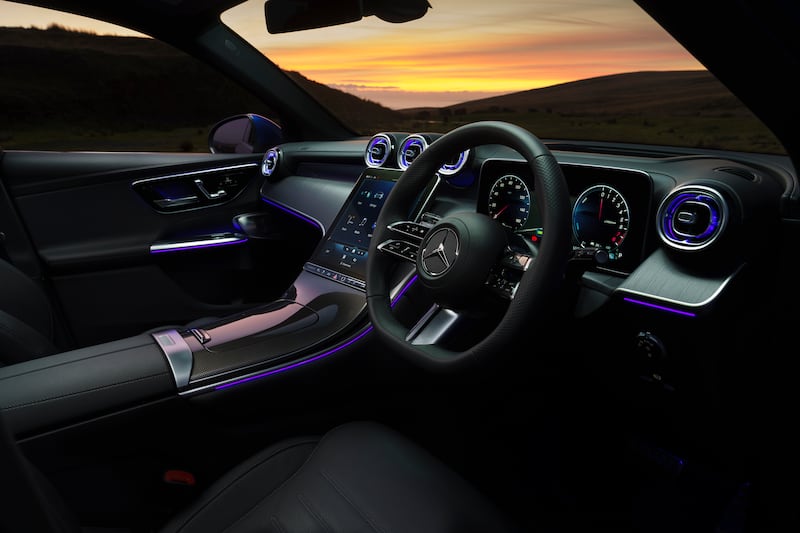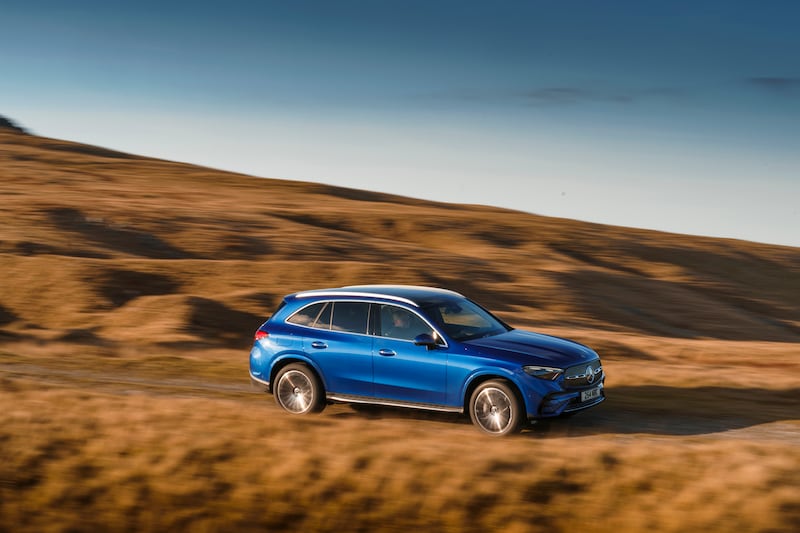With everyone charging premium prices these days, it’s hardly surprising the long-established premium players are getting a little irked to be rubbing shoulders with previously mass-market brands.
Brown Thomas wouldn’t appreciate being bunched together with the middle aisle at Aldi.
It undoubtedly influenced Mercedes’ decision last year to overhaul its strategy and put a little daylight between it and the rest of the motoring hoi polloi.
In future the focus of the three-pointed star is on high-end models. It’s no longer interested in playing the volume game.
Sally Rooney: ‘I enjoy writing about men ... the dangerous charisma of the oppressor class’
Alzheimer’s: ‘I’ve lost my friend and my companion,’ says Úna Crawford O’Brien of fellow Fair City actor Bryan Murray
Ryan Adams at Vicar Street: A gig that nobody will forget anytime soon, but perhaps not for all the right reasons
Meghan Markle’s new podcast: An ego-fluffing conversation underlining the culture gap between Ireland and the US
What that means for buyers on the forecourt is that Mercs will cost more money. This is having an impact already on new versions of its popular GLC crossover in its various guises.
With subtle exterior design changes, the big talking point here is the latest plug-in hybrid version, claiming an all-electric range of 129 kms.

Plug-ins are under attack from environmentalists who claim that, as most sales are in the company car market, these vehicles are rarely charged and mostly driven on their combustion engine while hauling around the empty battery. They also frequently fail to meet the claimed electric range.
Despite the valid points being made by critics, there remains a case to be made for plug-in hybrids. For many families right now it’s still a choice between a PHEV or a diesel until the infrastructure improves.
The key to a sensible PHEV is one that delivers proper usable electric range. And that’s where this new GLC stands out.
While most PHEV rivals feature a battery pack of between 15 and 17kWh, the GLC 300e we tested has a 31.2kWh pack.
On a cross-country run – driving normally and not hypermiling – our GLC test car managed to make it 104km on battery power alone, while over the proceeding 230km drive under engine power it achieved a rather impressive 6.4L/100km (44mpg).
Even in urban driving without the battery charged, it managed a reasonable 8.4L/100km (34mpg).
Considering the extra weight it has to haul – lugging that battery around under the boot floor – we were expecting far higher consumption.
Typical PHEVs have delivered real-life electric ranges of 30km or under, but here you have a car that could realistically run a suburban commute both ways on a single charge.
There is more good news from the GLC: while under battery power the car is understandably whisper quiet, even when the engine needs to do the heavy lifting it’s not a noisy rattling affair.
Many PHEVs are under-engined in the battle to keep emissions and costs down. The end result is a whiny underpowered drive once the battery gives up.
Despite tipping the scales at 2.3 tonnes, the GLC’s 2-litre petrol engine is capable of moving along at a strong pace to the tune of an eager petrol engine. This GLC PHEV claims a 0-100km/h time of 6.2 seconds, delivering reassuring pace when overtaking.
In terms of its SUV prowess, the GLC delivers all-wheel drive and a towing capacity of 2.5 tonnes. It’s also quite practical, even if you give up some of the 620 litres loadspace in the non-hybrid versions to accommodate the battery pack.

The most evident change inside to the outgoing version is the sweeping touchscreen in the centre console. It’s an impressive system that’s quick and intuitive. Back seat legroom is on a par with rivals.
The outgoing GLC was criticised for being a little light on steering feel and the suspension – particularly at the front – had a tendency to bottom out early in ruts and over speed bumps. The new version is firmer, thanks in part to engineering, and can cope with the extra battery weight, lending itself to much better handling. However, it does come at a cost to comfort on badly surfaced roads. It’s a trade-off that’s worth it.
Our reviews of late may seem to be fixated on price, but the price point is arguably the biggest hurdle to jump when considering this car.
The mild hybrid 220d diesel starts at €80,310, but if you want the PHEV then prices start at €91,510. Our test car with optional running boards (definitely don’t bother) and upgraded upholstery came to €92,563.

To put some perspective on how far prices have risen lately, according to figures from motor industry group SIMI, in February 2019 a GLC 220d version started at €47,840. That’s four years ago. It’s fair to say the new model is a big improvement. But is it worthy of that sort of price jump?
Rivals are a little more affordable; but only just. The BMW X3 plug-in hybrid starts at €72,015. It’s official electric-only range is half that of the GLC and in places it is starting to show its age compared to the glitz of the new Merc, but that’s still a €20,000 price walk between two brands many still consider to be rivals.
Similarly the Volvo XC60 Recharge claims a range of 77km and carries a price of €72,590.
Mercedes is asking a lot of its customer base to step up to what is a class-leading car in its segment. The problem is that once you tip into €90,000-plus territory a lot of alternatives start to crop up that deliver more luxury appeal than the popular GLC.
Lowdown: Mercedes GLC 300e 4MATIC
Power: 1,999cc, 4-cylinder engine and an electric motor powered by a 31.2kWh battery pack, combining to put out 313hp and 550 Nm torque
Official CO2 emissions (Motor tax): 12g/km (€140)
Official EV range: 129km
Price: €91,510 (€92,563 as tested)















